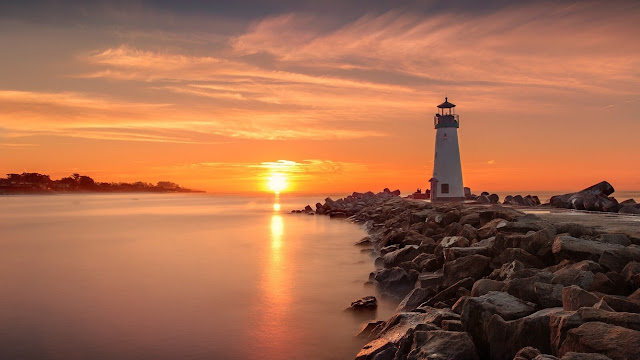 |
| Photo by Alex Pitt |
Years ago, I worked in a planetarium. I've mentioned that in previous posts, but it deserves repeating. The experience definitely colored my life and inspired me in myriad ways. Planetarium work--mostly talks and classes in the dome and off-site, including sidewalk astronomy--proved to be one of the most gratifying jobs of my career. People love to sit back in the cool darkness of a planetarium and voyage through the night sky. When they see a telescope set up a sidewalk or in a field, they always stop and take a look.
In my planetarium talks, I identified the major stars, which also happen to be the navigating stars. We found the north pole of the sky using the Big Dipper and the Pointer Stars (I called them the Pointer Sisters--I'm dating myself now!) that point to Polaris, the North Star, which lies very close to the celestial north pole. I always gave a simplified explanation of how navigators of yesterday used the stars and a few rudimentary instruments, plus some math, to find their way at sea. What seemed complicated suddenly made a little sense. And it gave my audiences a bit more appreciation for those twinkling lights in the heavens.
 |
| Jim Reitz's photo of stars slowly circling over Lime Kiln Lighthouse. Near the top, in the dark little circle, is Polaris. |
**********************************
One of the loveliest natural motions for the camera is evidence of the Earth turning on its axis. As our planet rotates from west to east, the stars seem to move above us from east to west. Set up a camera on a tripod, open the shutter for awhile (ten minutes or more), and you'll capture proof of Earth spinning on its axis. Such celestial motion is awesome, not to mention that it gives us day and night. Check out these images of star trails.
*****************************
Other delights await the night sky observer, including the Milky Way, a view into the star rich center of our galaxy where some 100,1000 stars reside. Some are so distant, they appear as luminous dust. It's pretty wild at the galactic center, with lots of stars growing and dying, and maybe even a Black Hole.Not surprisingly, in my planetarium talks, I dubbed those bright navigating stars "lighthouses in the heavens," because they showed the way at sea and were considerably brighter than the other stars visible to the naked eye. We humans can see about 3,000 stars overhead on a dark, moonless night away from cities and other sources of artificial light. As mentioned earlier, the milky appearance of the Milky Way contains MANY MORE stars. The night sky is an amazing canopy of tiny lights--far away natural lighthouses.
 |
| Adam Seward made the stars stand still in this excellent quick image! Can anyone identify this lighthouse? |
 |
| Greg Lovett caught the moon behind what I think is Jupiter Lighthouse on one of its Full Moon Tours. Check out that gorgeous Fresnel lens, a moon in itself! |
 |
| Cape Espichel lighthouse near Cabo Espichel, Sesimbra, Portugal was captured on March 16, 2014 by Miguel Claro. He took successive exposures to track the moon-rise behind the lighthouse. |
 |
| Here's another sunrise behind Ram Island Lighthouse, captured by the well-known Capt. Kimo. He's a lighthouse fan with a talent for photography! |
*****************************
I wasn't kidding when I said that stars are lighthouses in the heavens. If you aren't about this claim, read on.I'll end this voyage through the night sky with a poem I wrote many years ago when I worked at the planetarium. This poem appeared in my out-of-print book, Lighthouse Victuals & Verse. I drew the lighthouse too! (I dearly wish my arthritic hands could still render images like this--I fear I've lost some of art skill.)
Enjoy, and do go out and look at the night sky--preferably near your favorite lighthouse!
 |
| Sunrise at Abaco's Elbow Key Lighthouse in the Bahamas, by Patrick Bennett. |









No comments:
Post a Comment
I welcome your comments, photos, stories, etc.!